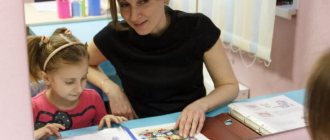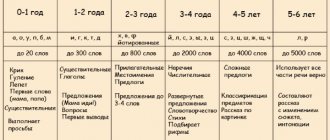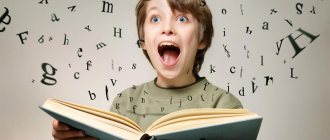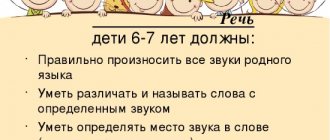Speech is one of the indicators of child development. As children grow up, they expand their vocabulary and actively explore the world around them. However, many babies, as they grow up, face problems when reproducing certain sounds. This is the norm in the first years of life. But if a child pronounces sounds incorrectly at an older age, then we can talk about a violation of sound pronunciation.
Violation of sound pronunciation is the most common speech defect that speech therapists constantly encounter. Pathology comes in various types:
- dyslalia with normal hearing and a healthy central nervous system;
- dyslalia in children with different degrees of hearing loss;
- dysarthria with normal hearing, but with organic lesions of the central nervous system.
Problems with sound production most often occur in preschool age. At this time, it is necessary to correct the speech defect. However, many parents do not react to the fact that the child cannot pronounce a large number of sounds. Some consider it unimportant, while others are confident that everything will go away on its own.
Norms for the development of sound pronunciation
If a child has difficulty pronouncing sounds, this is not always a cause for concern. In some cases, this is an age-related developmental norm. At each stage of growing up, a child acquires certain speech skills.
- from 1 month – children begin to unconsciously pronounce the vowel sounds “Y”, “U”, “A”, “E”. In infancy, the child mostly lies down, and the tongue can be thrown back. Therefore, sometimes the baby manages to pronounce several back-lingual sounds, for example, “G” or “X”;
- from 4 to 5 months - children try to practice reproducing individual sounds;
- from 5 to 10 months – the baby moves from individual sounds to syllables. Usually these are "Ba", "Ta", "Pa", Da" and "Ma". The number of syllables gradually increases. If up to 4 months the baby “booms,” then from 5 to 10 months he “babbles”;
- from 10 to 18 months - the child tries to pronounce his first words. By this point, children are able to consciously reproduce most of the vowel sounds - “A”, “Y”, “O”, “E”, “I” and “U”, as well as some consonant letters - “M”, “T”, “ P", "D", "B", "N", "K", "V", "G", "Y", "F", "X";
- from 1.5 to 3 years - the child is able to pronounce several whistling sounds - “C”, “S” and “Z”. If he cannot cope with this task, then you should pay attention to the situation. Note that from 1.5 to 2 years the baby often pronounces sounds incorrectly. For example, instead of “З” it is used “Дь” (“tooth”/“doubt”/“oak”). By the age of three, children often experience a softening of vowel and consonant sounds (“tumba - “tyumbya”, “baby - “crumpled”). As a rule, this goes away by the age of four;
- from 3 to 4 years. Children proceed to play hissing sounds - “Shch”, “Sh”, “Ch” and “Zh”. Until this moment, as a rule, they replace them with similar ones - “Sh” with “S” (“school” - “skola”), “Ch” with “C” or “T” (“chub” - “tsyub” / “tube”), etc. If a child up to five years old does not pronounce hissing sounds well, then this is the norm. The baby gradually learns, so these letters may not be pronounced correctly in all words. There is a partial replacement of sounds, for example, “the cat caught the mouse,” etc. It is important to regularly work with the child and correct him. Then he will quickly master the new sound;
- from 4 to 5 years. The appearance of sonorous sounds is observed. But up to 4.5 years, for example, the hard “L” can be replaced with the soft “L”. By the age of five, the child can already pronounce “R” and “L” well. This is the most complex group of sounds. Therefore, there is no need to demand from a child that at the age of three he clearly says “fish”, “crayfish” and other “growling” words. Moreover, if you put a lot of pressure on your baby, he may begin to pronounce “R” in the manner of the French language. This deviation will be more difficult to correct at an older age. Remember that it is better to turn on the sound when it is not there yet than to re-teach the child.
Naturally, all children are individual. Therefore, minor deviations from the norm are allowed. If parents constantly talk and practice with their child, then such a child pronounces sounds correctly by the age of five. However, more and more often preschool children have problems with sound pronunciation. Please note that if a child pronounces sounds incorrectly while at school, he may have problems learning to read and write.
Unfavorable ways of pronunciation.
- The child has developed a “French” pronunciation of the sound [r], in this case the normative pronunciation of this sound cannot arise spontaneously. There is a risk that other sounds will be formed defectively. The method of pronunciation indicates an unimpaired speech exhalation.
- The same sound is constantly replaced by another sound (may be incorrectly pronounced), for example [c]-to [sh], or vice versa. Then all sounds of this type (in our case, whistling or hissing) will be pronounced in a similar way. The method of pronunciation may indicate insufficient speech hearing.
- Hissing, whistling sounds [r] and [l] are pronounced with an overtone of the sound [x] or are replaced with this sound (maybe a little guttural-sounding). The method of pronunciation indicates impaired speech exhalation.
- When pronouncing sibilants and [l], the child’s tongue protrudes between the teeth. The method of pronunciation indicates a violation of the mobility of the speech organs.
- The child's speech sounds discordant, sloppy and untidy. This may indicate a violation of the mobility of his speech organs.
| Service name | Duration | Price |
| Consultation and program development | 40 minutes | 2,500 rubles |
| TOMATIS method (individual) | ||
| TOMATIS method 1st session | 30 lessons of 60 minutes | 30,000 rubles |
| TOMATIS method 2nd session | 26 lessons of 60 minutes | 26,000 rubles |
| TOMATIS method 3rd session | 11 lessons of 60 minutes | 11,000 rubles |
| Diagnostics in the center | 40 minutes | 1,000 rubles |
| Diagnostics at home | 40 minutes | 2,000 rubles |
| One lesson with a specialist at the center | 40 minutes | 1,000 rubles |
| One lesson with a specialist at home | 40 minutes | 2,000 rubles |
| Group classes “Preparing for school” | 8 lessons of 60 min. | 4,000 rubles |
| Early development groups | 8 lessons of 60 min. | 4,000 rubles |
| Group speech therapy sessions | 8 lessons of 60 min. | 4,000 rubles |
| Diagnostics with a neuropsychologist in the center | 1 lesson of 60 min. | 2,000 rubles |
| Session with a neuropsychologist at the center | 1 lesson of 60 min. | 2,000 rubles |
| Diagnosis with a neuropsychologist at home | 1 lesson of 60 min. | 2,500 rubles |
| Session with a neuropsychologist at home | 1 lesson of 60 min. | 2,500 rubles |
Speech pathologist-defectologist to correct the sound “r” Come to classes with a speech therapist for adults Find out the cost of services for classes with a speech therapist m
How do sound pronunciation disorders manifest themselves?
If the baby pronounces sounds incorrectly, this may indicate dyslalia or dysarthria. These deviations have some differences. With dyslalia, the pronunciation of sounds of different groups is impaired - sonorant, hissing, front-lingual, and so on. Speech defects can manifest themselves in different ways:
- absence of sounds (omission of complex letters in the words “yoke” - “yoke”);
- replacing sounds (together with “R” the child pronounces “L”, for example “fish” - “lyba”);
- distortion of sounds (French “R”, side “W”, etc.).
Dyslalia often develops against the background of hearing loss. Children with hearing loss have difficulty distinguishing between whistling and hissing, dull and voiced sounds.
With dysarthria, the child pronounces consonants and vowels incorrectly. Improper breathing and decreased emotional expressiveness of speech are also observed. It is worth noting that disturbances in the pronunciation of sounds associated with dysarthria are more stable. Therefore, correction may require more time and effort.
Causes of sound pronunciation problems
If the baby pronounces a number of sounds incorrectly and indistinctly, then it is worth being examined by a neurologist and speech therapist. The causes of problems with sound pronunciation may be different. However, it is necessary to identify the problem in a timely manner in order to select an effective correction program.
Dyslalia can occur due to:
- pathologies of the development of the speech apparatus (malocclusion, short frenulum, etc.);
- presence of two languages in the family;
- incorrect approach to the development of a child’s speech (communication in a “lisping” language);
- hearing loss;
- problems with sound pronunciation in one of the parents (children tend to tremble).
Dysarthria develops with damage to the central nervous system, which can be caused by:
- problems during intrauterine development;
- injuries during childbirth (umbilical cord entanglement, etc.);
- cerebral palsy;
- Rhesus conflict;
- serious infections that the child suffers;
- problems with blood circulation in the brain;
- brain injuries.
Even serious problems with the pronunciation of sounds can be corrected. However, many parents have one question. If sound pronunciation can be corrected, then why do many adults speak incorrectly? This is due to two factors. Some parents believe that there is nothing wrong with the incorrect pronunciation of certain sounds. There are also cases when they begin to provide assistance without identifying the cause of the speech defect. Naturally, correction of dyslalia with dysarthria will not have an effect.
Impaired pronunciation of sounds [h], [sch]
Of course, one cannot bypass such a defect as a violation of the pronunciation of the sounds [h], [h]. Most often, [h] is replaced with the sound [t'], or it acquires an interdental pronunciation of the sounds [uh], [s']. The reasons are the same as for sigmatism. It is usually easy to correct and is rare in adults.
In conclusion, one last, very revealing story:
Lyudmila Alekseevna, 40 years old, came to our Center for help. To her surprise, she was found to be missing 6 sounds: [zh]-[w], [l]-[l'], [r]-[r']. The story of her “non-speaking” shocked us. It turns out that the mother promised the girl that when she turns 18, all the missing sounds will appear by themselves. And so the girl falls asleep after her birthday with hope for the morning... And in the morning... a miracle did not happen.
After our classes, with her great desire, superhuman hard work, incredible efforts and, of course, with the support of family and friends who did not really believe in the possibility of correction, she was able to say everything she wanted.
Speech develops throughout life; sound can be introduced at any age. But... in childhood the brain is more plastic, so everything happens much easier and faster! Don't delay the decision to make your speech clear and beautiful.
Share:
Find out more about the Center's services and sign up for a consultation or lesson
You can call (812)
640-90-77
, or by filling out the form below.
Phone in St. Petersburg:
+7 (812) 640-90-77
Daily from 10:00 to 21:00
Reviews:
“I have been pronouncing the sounds W and Z incorrectly for almost 50 years. I started working with a speech therapist. After 8 lessons, the defects were completely gone, I say correctly and beautifully. Extremely pleased." Shchedrov Viktor
“I would like to express my gratitude to Elena Anatolyevna. I had problems pronouncing the sounds [r] and [r'], with her help we put them in place. It was not easy to introduce them into everyday speech, but it was worth it! In a month (7 visits) I achieved incredible results and I’m proud of it! Thank you very much!" Mikhail, 17 years old
Corrective work
If a child pronounces sounds incorrectly, you should contact a speech therapist. He will examine the baby, determine the cause of the disorder and prescribe an effective assistance program. It is selected individually in each case. In order for a child to speak normally, it is necessary to eliminate the cause of the violation of pronunciation of sounds. In some cases, surgical correction of the speech apparatus is required. Then the speech therapist refers the child to the dentist. After this, you can begin to produce the correct speech.
Many parents worry when their child pronounces many sounds incorrectly. In this case, to correct the disorder, it is better to contact the NEAPL Speech Therapy and Psychology Center. Experienced specialists use an integrated approach to correcting speech defects using speech therapy massage, play sessions, logorhythmics, and so on. A team of professionals works on the correct pronunciation of sounds, which allows you to achieve a lasting effect.
Correction of dyslalia
Speech therapy work to correct dyslalia consists of the following stages:
- Examination of a child’s sound pronunciation;
- Correction of impaired speech sounds:
- Development of articulatory motor skills;
- Formation of skills in distinguishing speech sounds based on acoustic and articulatory features (work on phonemics);
- Production of disturbed sounds;
- Automation and introduction of formed sounds into speech.
The following stages are distinguished in the work on correcting sound pronunciation:
- Preparatory;
- Sound production;
- Sound automation;
- Sound differentiation.
The purpose of the preparatory stage is to prepare the organs of the articulation apparatus for the pronunciation of sounds: at this stage, the accuracy, strength and differentiation of movements of the articulation organs are worked out; work is underway to develop speech exhalation. At the preparatory stage, the child learns to perform articulatory gymnastics exercises, as well as various breathing exercises.
Important to remember! There is a basic set of exercises for developing the basic movements and position of the organs of the articulatory apparatus. Additional sets of exercises necessary for staging certain groups of sounds are selected for the basic complex.
Important to remember! Exercises to develop speech breathing help children develop targeted exhalation, which is necessary for mastering difficult-to-pronounce sounds.
Instructions for performing articulation gymnastics, as well as a list of exercises, can be read in our article
Video of articulation gymnastics:
Photos and videos of breathing exercises
Tips for parents
Quite often, the child pronounces the correct sounds during classes with speech therapists and teachers. But, returning home, he loses control of himself. This behavior is allowed in the first steps of correction, since the child learns to control himself gradually. However, parents should be persistent. They can help form auditory attention faster.
Many adults communicate little with children, limiting themselves to only short remarks, for example, “go eat,” “wash your hands,” and so on. To form the correct sound pronunciation, you need to talk more with the child. Voice any situations, accompanying them with visual contact. For correct pronunciation of sounds, the baby must see the articulation of the parents. Therefore, try to speak clearly, clearly and with intonation. When communicating with your child, avoid complex sentences. Too much information will not allow him to focus on sounds. At the same time, children often acquire the bad habit of listening to adults mechanically. This may interfere with correction, since the child will transfer this behavior to the teacher’s office.
Read more books to your baby. This will give him the opportunity not only to remember the correct sounds, but will also significantly expand his horizons. Fairy tales, poems, ditties and stories can be repeated several times. Children perceive better information that is already familiar to them. To learn how to reproduce sounds correctly, you can also role-play scenes and use various objects and gestures. Children like this form of activity and they do not resist. Watch how your baby pronounces sounds, whether he pronounces them clearly or tries to swallow them. Don't rush him while reading poetry. Let him say every sound.
The development of fine motor skills also has a good effect on the formation of correct speech. You will be surprised that modeling from plasticine or drawing will help your baby pronounce sounds well. This will also have a positive impact on the development of written speech in the future. The child must be able to fasten buttons, tie shoelaces, knots and bows. This also affects the correct pronunciation of sounds due to the development of hand-eye coordination.









